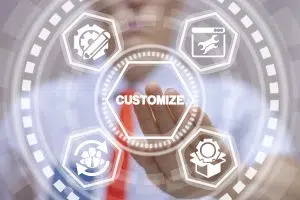17 Nov 8 Things Your Outsourced Claims Management Provider Should Be Doing
 Outsourcing fleet claims management shouldn’t mean overhauling your processes to fit a vendor’s rigid system. A customized approach can support your important workflows with best practices to make the system better – not just different.
Outsourcing fleet claims management shouldn’t mean overhauling your processes to fit a vendor’s rigid system. A customized approach can support your important workflows with best practices to make the system better – not just different.
Here are eight things Fleet Response does that make its approach to claims management best in practice.
Understand and address underlying issues
Every new-client implementation is different. The time frame can range from a couple weeks to 45 days – depending on the project’s complexity. It’s not about making the client conform to a standard set of processes, but instead follows a consultative approach to identify and meet the client’s unique needs while making the claims management process smoother and more valuable than it was before.
“At the outset, a client may be laser-focused on one particular outcome,” says Client Engagement Coordinator, James Ruffing. “We’re encouraged to leverage our process expertise and guide clients to the solution they don’t always know they’re looking for.”
Customize to meet your needs
Once client needs are clear, they’re met through customization of everything from the onboarding process itself to driver profiling, integration of telematics, MVR monitoring and training programs.
“We have a number of clients who thought they were too small to outsource, or that their needs were too specialized,” Ruffing says. “We’ve helped them revolutionize their operations.”
Assemble the right team
Internal discussions at Fleet Response include Client Services leaders, the Business Development department and the Sales Representative to understand a client’s priorities, needs and unique factors. Fleet Response matches each client with a claims representative whose experience fits the type of claims that can be expected.
“The relationships we develop with clients become part of the value we offer,” says Client Engagement Coordinator, Stephanie Strickler. “People appreciate that person-to-person contact.”
Facilitate connections between risk, safety and fleet
New-client implementations include a parameter call that brings together all relevant stakeholders – risk, fleet, safety, HR and anyone else that may touch a claim.
“In some cases, it’s the first time all of these people have ever been at the same table,” Ruffing says. “I’ve had customers tell me the most important thing we did was help them understand the process from different perspectives within their own company.”
Make data integration easy
No matter where information comes from or how it’s used, it should be easily accessible in one place. Transfer and integration of data – even coming from other providers – makes information readily available and exportable for analysis, reporting and collaboration. The Fleet Response VISBILITY portal provides complete transparency through the entire claims process.
“I love that our clients use this tool as much as we do,” Strickler says. “It gives them the knowledge that they’re in control.”
Automate wherever possible
Key communications among fleet and risk managers, drivers, safety teams, human resources and other relevant parties can be automated to improve response, reduce risk and eliminate repetitive tasks.
“We’re bringing on a client right now that wasn’t looking for improvement; they just wanted us to take the work off their hands,” Strickler says. “But we learned the offices where the drivers are saw us as just another layer to deal with. So, we automated some of the steps they had to take when reporting a claim…. I think they were surprised we took accountability instead of making it their problem.”
Follow up to ensure your needs are being met
A 30-day review makes sure communications are smooth and expectations are being met. It’s also an opportunity for Fleet Response to share observations and make recommendations for improvement. Additional reviews are held at 60 and 90 days.
“We tell them we’re an extension of their team, and they learn that it’s true,” Ruffing says.
Never turn a driver away
Every claim puts a company’s brand on the line. Fleet Response protects your organization’s good name from the first moment a claim is reported.
“If somebody calls us from the side of the road and needs help, we’ll handle it.” Strickler says. “Whether it’s a past client, third-party or even a non-client, if they somehow got our number, we’re going to help them now and figure it out later.”
To discuss how Fleet Response can ease your claims management challenges, contact Vice President of Sales and Marketing, Jeff Fender at contact@fleetresponse.com. He has been with Fleet Response for 19 years.
Client Engagement Coordinator Stephanie Strickler has worked for Fleet Response for eight years. Before joining the client onboarding team, she served in the call center, claims management and subrogation.
Client Engagement Coordinator James Ruffing, AIC-M, MBA, has been with Fleet Response for 17 years in the call center, subrogation department, claims management and, most recently, as team lead in the maintenance department.

